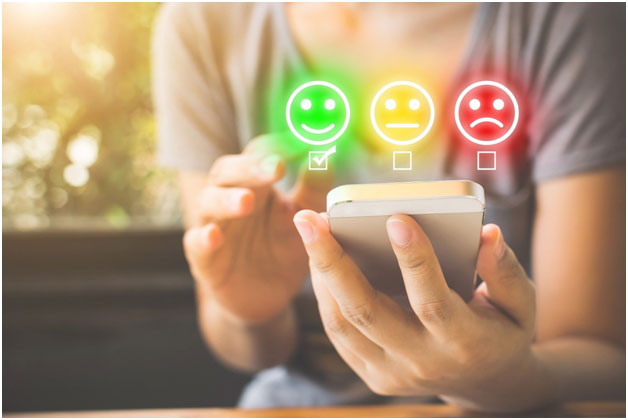Customer experience is defined by the process a customer goes through when interacting with your brand online. The goal is to drive a purchase and customer loyalty. The customer experience starts the first time a customer hears about a brand and continues all the way through the purchase process and customer service interactions afterward.
Delivering a good customer experience is very important because 32% of today’s online customers will stop buying from a company after a bad experience. Every step of the purchase or service process is important, from the first interaction to follow-up reminders like those from Bridge™ Engagement.
Our guide will discuss a bit of customer experience history, how the customer service experience works today through case studies with successful companies, and what you can do to take charge of the customer experience in your business.
The Evolution of Customer Experience in The Digital Age
The customer experience has changed dramatically in the last 20 to 30 years. A solid customer experience in the 1980s and 1990s often involved a physical storefront, so having a retail store with a unique experience that customers wanted to visit made a big impact. Many ties to businesses were more local than national or international.
As data began flowing across the Internet, products were more available online and could be purchased directly from the manufacturer or maker and shipped. Customers didn’t need to go to a big box store to buy specific items as the purchase could be made online. Commerce became much more competitive and involved national and international customers fighting for the same buyers.
Some big companies who understood the evolution of digital customers stepped up and grew by adapting to new customer experience needs.
Understanding The Digital Customer Journey
The process of reaching a customer has a few steps, including awareness, making them consider your product, buying the product, and potentially reaching out for support.
Today, the customer journey can involve many touchpoints. A person can see an ad while watching their favorite show on a streaming service or in their social media feed and then hear about it on the radio. This can be followed by going to the company website, their Amazon page, or downloading their app to purchase the product or service.
Delivering your message to all these places involves making a customer journey map. For many companies, starting the customer journey requires identifying your target demographics. The next step is deciding how and when to target them across various media and devices.
Within each of these interactions are areas where many companies can improve. For example, you can use a heatmap to measure customers’ movements within your app or site. Using data from a heatmap, you can best arrange your site so that customers can easily find what they are looking for.
Content is also very important. If your website or app isn’t user-friendly and informative, customers will just leave. You have about 7 seconds. This means you must lead with your strongest, most convincing statements and images or videos first to have a shot at selling your product to the customers.
Thankfully, customer experience software like heatmaps makes this a bit easier. Rather than guessing, you can see statistics about what your users do and make those improvements, then tweak areas that are not doing well.
Leveraging Technology to Enhance Customer Experience
Technology can improve the customer experience and make the process of serving the customer easier for your company.
For example, any appointment-based service would benefit from automatically sending reminders to customers about upcoming visits. This saves internal employees the time and effort of remembering when to send out texts, emails, or calls when they have other things to do. It can also help reduce the number of missed appointments. Bridge Engagement is a great example of this kind of service.
You’ve probably heard a lot of discussion about the use of artificial intelligence. Most customers’ direct experience with AI revolves around customer service or sales chatbots. AI chatbots can bring big benefits to your business with their always-on capability and nearly instant, satisfactory answers.
Case studies show that online sales can increase by 50% or more with a well-trained and always available chatbot ready to answer questions. Chatbots can also be programmed with scripts and, of course, machine learning to provide a consistent but personalized user experience.
AI can also help solve users’ problems when it comes to questions or troubleshooting after the sale. A chatbot provides the opportunity to give users answers right away, even at hours when solid human customer support might not be available, like asking what ingredients are in makeup at 6:00 AM or how to use a feature on a remote at 11:30 PM while trying to watch a show.
So, how do you pick which tools you need to improve your customer experience? Consider both your customers and your weaknesses. If you are struggling with online sales and your customers want interaction, an AI chatbot might be a good answer. A new customer relationship manager system might be a good idea for companies who want to input and organize their data for better outreach.
You’ll just want to make sure the result is easy for you to use and, even more importantly, very customer-friendly. Today’s customers have high expectations for the customer experience, which is driven by many companies’ successful adoption of user data, which we’ll talk about next.
Personalization: The Heart of Digital Customer Experience
Personalization is a relatively recent but very important concept in the customer experience. Customers can be truly impressed when their favorite e-commerce site sends solid recommendations for products they want or didn’t even know existed.
Streaming video services like Netflix have also become especially good at this, giving specific recommendations based on what you watched previously. Personalization certainly helps customers not even have to search when it comes to finding what they want. Have you ever spent half an hour looking for just the right product or the right movie to watch? Data and personalization can be very helpful for people wrestling with time and indecision.
Amazon is a prime example of personalization. They actively use data from customers to present recommendations right on the front page. They also label their categories so that you have a good idea of why recommendations are being made, like showing categories you often search in, what people like you searched for, and things that were frequently bought together.
Like Netflix, Spotify offers serious personalization by presenting music similar to what the user has listened to before and recommending new genres. Spotify made good use of its data collection process and its users’ love of music to become a social media sensation in Spotify Wrapped. Spotify Wrapped presents users with a social media-friendly graphic showing the music they have listened to most often in the last year. The purpose is to share that the user listens to Spotify and to remind them of music they previously listened to. Many Spotify users who are into music share their Wrapped results every year.
Nike, already known internationally as an outstanding sneaker brand, takes personalization to a new level with SNKRS. SNKRS is a separate section to their site and app that allows access to unique and rare sneakers in addition to content about the brand, sports, and shoe making. Personalization will continue to be a major point for online retailers and many services that offer a wide variety of products. Users often appreciate receiving recommendations for what they might like instead of searching through a website. When using personalization, you’ve saved the customer time and developed loyalty. Another company might not have the same data to drive the decision to present just the right product.
Data-Driven Decisions to Improve CX
As you can tell from the impact that data has on producing personalized results, it’s rather important to use data when making decisions about your customer experience. Thankfully for business decision-makers, data is often readily available from a few sources.
Your e-commerce or service websites need a good way to collect customer data. Google Analytics and other site analytics websites can present you with reports and actionable insights about which parts of your site are working and which are not. They can also help drive personalized remarketing by collecting some data on users’ demographics that are invaluable in the long run.
Website shopping cart platforms like Shopify also connect the dots when it comes to user data and personalization. Companies like these work in a similar way to Amazon’s recommendation systems by delivering unique, personalized messages with just the right products for the user, sent at the right time. For before and after the sale, customer surveys are also very valuable. A company can often reach out via email, text, or social media ads, asking a customer about their experience. Open-ended questions are often quite helpful here in thoroughly examining a customer’s thoughts on going through the customer experience.
Integrating Omni-Channel Strategies for a Seamless Customer Experience
You might be wondering what omni-channel means. Let’s start with an explanation of a slightly older concept called multi-channel marketing.
The multi-channel approach was good a while ago and is still effective in some cases. While users can receive personalized results on one channel, those personalizations do not change based on different products they view in the future on another device. This means that any offers and recommendations could be more specific and timelier.
An omnichannel strategy is a newer way of thinking about commerce and services that acknowledges that customers have many ways to interact with your company. These methods include multiple hardware devices like laptops and smartphones and physical interactions like in-store visits.
The omni-channel approach takes all these conversations and delivers a personalized experience no matter the device. If a customer wants to browse your site on their work laptop, and then switch to their cell phone, the experience should be the same level of personalization. In the end, an omnichannel approach keeps up with your customers better.
Engaging And Retaining Customers Through Digital Experiences
When we say digital experiences, we refer to the way customers can interact with your company. There are a few examples of methods of how to talk to customers digitally.
Content marketing is an effort to help customers with topics related to your business. For example, a company that specializes in health products can write articles and make videos dedicated to how their product works in everyday life. These don’t need to be a sales pitch and should be intended to provide genuine help.
Social media engagement can also provide value to users. Engagement can mean a lot of things, including making helpful posts and trying to reach a wider audience on social media. Much like content marketing, you want to make your posts genuinely useful.
Loyalty programs are useful for retaining customers over a longer time. A loyalty program often includes loyalty-specific offers as well as free products given away at specific intervals.
Overcoming Digital Customer Experience Challenges
One of the most common challenges companies experience when providing a good digital experience is negative reviews. Negative reviews on social media and your business profile can make new and even existing customers less confident in your products and services.
There is a solid solution, though. Respond to reviews! Whether you choose to have someone in your company respond or hire an agency that brings issues to your attention, customers will truly appreciate a sincere response to a negative review. You will show that you care about the product and the customers and build more loyalty.
Conclusion
Getting started with improving your customer experience starts with considering your company’s strengths and weaknesses in digital interaction. If you have a website, app, e-commerce account, email, and social media, you’ll want to ensure they are working together to provide the best experience possible.
The customer experience is also ever-changing. You’ll want to do continuous research on what your customers like and make changes from there. When you find things to improve, find help improving them! Some companies will find that they want to improve their online sales and customer service with chatbots. Others need help managing their reviews and reputation. Bridge™ Engagement is a great option for businesses that could use help reminding patients and customers about appointments with less effort.
Now that you’ve learned more about what kinds of strategies matter for the customer experience, we encourage you to take some action. Also, whether you’ve already successfully made changes, or we’ve inspired you to do so, please write to us about what you did and how it worked!



